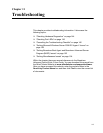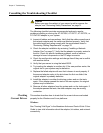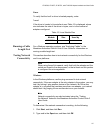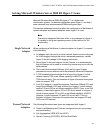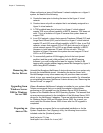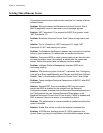
AT-2973SX, AT-2973T, AT-2973T/4, and AT-VNC10S Adapters Installation and User’s Guide
149
Solving Microsoft Windows Server 2008 R2 Hyper-V Issues
Microsoft Windows Server 2008 R2 Hyper-V™ is a hypervisor
virtualization system. For detailed information about Hyper-V, see http://
www.microsoft.com/windowsserver2008/en/us/hyperv.aspx.
This section addresses issues that affect the configuration of NetXtreme II
network adapters and teamed adapters when Hyper-V is used.
Note
Ensure that Integrated Services, which is a component of Hyper-V,
is installed in the guest operating system (child partition) for full
functionality.
Single Network
Adapter
When configuring a NetXtreme II network adapter for Hyper-V, be aware
of the following:
An adapter that is bound to a virtual network should not be configured
for VLAN tagging through the driver's advanced properties. Instead,
Hyper-V should manage VLAN tagging exclusively.
Since Hyper-V does not support Jumbo Frames, it is recommended
that this feature not be used or connectivity issues may occur with the
child partition.
The Locally Administered Address (LAA) set by Hyper-V takes
precedence over an address set in the adapter's Advanced Properties.
A TOE-enabled network adapter that is bound to a Hyper-V virtual
network reports TOE as an offload capability in BACS; however,
TOE does not work. This is a limitation of Hyper-V because this system
does not support TOE.
In an IPv6 network, a team that supports Checksum Offload (CO) and
Large Send Offload (LSO) and is bound to a Hyper-V virtual network
reports CO and LSO as an offload capability in BACS. Also, in an IPv6
network, a team that supports CO or LSO and is bound to a Hyper-V
virtual network reports CO or LSO as an offload capability in BACS.
However, in both instances CO and LSO do not work. This is a
limitation of Hyper-V because this system does not support CO and
LSO in an IPv6 network.
Teamed Network
Adapters
The following Broadcom team types are supported with Hyper-V:
Smart Load Balancing and Failover (configured only for one primary
and one standby)
Link Aggregation (IEEE 802.3ad LACP)
Generic Trunking (FEC/GEC) 802.3ad Draft Static





